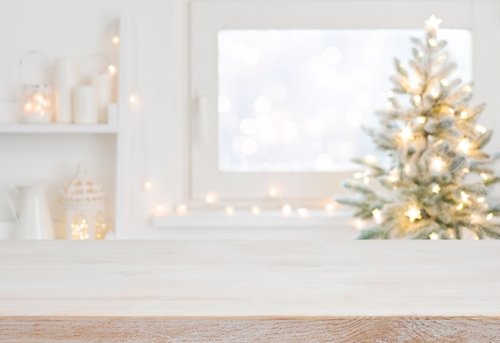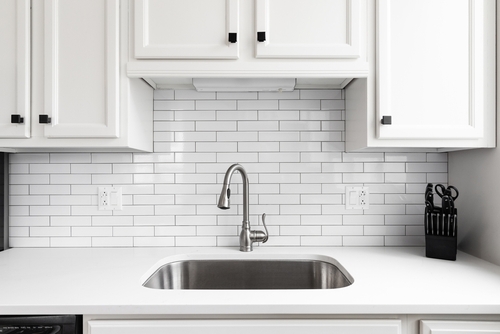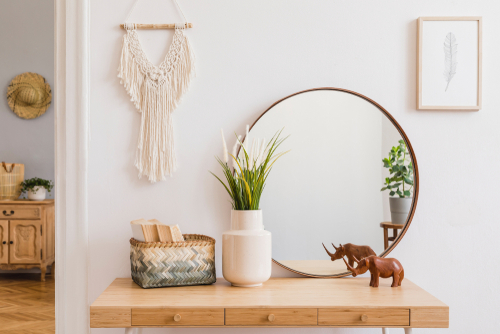Seasonal Decor Tips

As the seasons change, many of us find joy in updating our homes with seasonal decor. From festive decorations for the holidays to refreshing accents that celebrate the arrival of spring or fall, incorporating seasonal elements can breathe new life into your space. In this blog post, we will explore some seasonal decor tips and ideas to help you transform your home and create a welcoming atmosphere for every time of the year.
1. Holiday Magic: Deck the Halls
Holidays are the perfect opportunity to embrace seasonal decor. Whether it’s Christmas, Halloween, Thanksgiving, or any other special occasion, you can add a touch of holiday magic to your home. Start by focusing on key areas such as the entryway, fireplace mantle, and dining table. Choose festive wreaths, garlands, and table centerpieces that reflect the theme of the holiday. Incorporate holiday-specific colors, patterns, and textures into your decor for an instant festive ambiance.
2. Celebrating the Seasons: Embrace Nature
Each season brings its unique natural beauty, and incorporating elements of nature into your decor can celebrate the changing seasons. For spring, bring in fresh flowers, pastel colors, and lightweight fabrics to create a light and airy atmosphere. During the summer, experiment with vibrant hues, tropical prints, and natural materials like rattan or seagrass. In the fall, embrace warm earth tones, pumpkins, and cozy textures like plaid or faux fur. Finally, during the winter, opt for evergreens, pinecones, and rich colors like deep reds and greens to create a cozy and inviting space.
3. Colorful Accents: Swap Out Pillows and Throws
Updating your home’s color scheme is an effective way to create a seasonal impact. One of the easiest ways to do this is by swapping out pillows and throws. Choose pillows and blankets in colors and patterns that reflect the season. In the warmer months, opt for lighter pastels or vibrant hues, while cooler seasons call for deeper tones and cozier fabrics. By simply changing these small accents, you can instantly update the look and feel of your space, giving it a fresh and seasonal vibe.
4. Tablescaping: Set the Scene
A well-designed table can instantly transform any room, especially during special occasions and holidays. Create eye-catching tablescapes by combining elements such as candles, table runners, centerpieces, and decorative plates to reflect the season or holiday. For example, during spring, consider using fresh flowers, floral tablecloths, and bright tableware to create a vibrant setting. During the fall, opt for rustic motifs, earthy tones, and textured linens. Tablescaping allows you to make a big impact with small changes, turning any meal into a visual delight for family and guests.
5. Wall Art: Changing Seasonal Prints
Another way to update your home’s decor for the season is by changing up your wall art. Hang prints or paintings that showcase the beauty of each season. For example, during spring, display artwork featuring blooming flowers or scenic landscapes. In the winter, opt for art that evokes a cozy and wintery ambiance, such as snowy landscapes or holiday-themed prints. Swapping out your wall art creates a focal point in your space, instantly reflecting the season and setting the tone for the entire room.
6. Lighting: Create an Inviting Ambiance
Lighting plays a crucial role in setting the mood and ambiance of a space. To create a seasonal feel, incorporate various lighting elements. In the spring and summer, maximize natural light by opening curtains and using light and sheer drapes. When daylight diminishes in the fall and winter, introduce warm, soft lighting through floor or table lamps, string lights, and candles. This will create a cozy and inviting ambiance, perfect for those colder months. Consider using scented candles to further enhance the seasonal atmosphere.
Summary
Seasonal decor allows us to celebrate the changing seasons and infuse our homes with a fresh and invigorating vibe. By incorporating holiday-specific items, embracing nature, updating accents like pillows and throws, creating eye-catching tablescapes, changing wall art, and adjusting lighting, we can transform our spaces with small changes for a big impact. Remember to have fun and let your personal style shine through as you experiment with seasonal decor, creating a home that is both beautiful and welcoming all year round.


